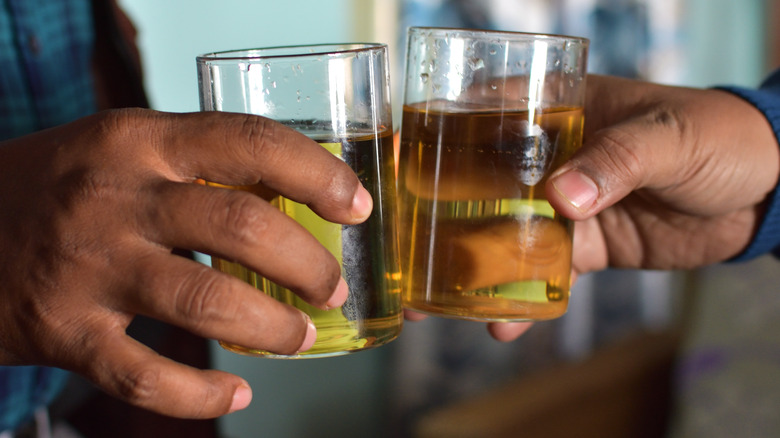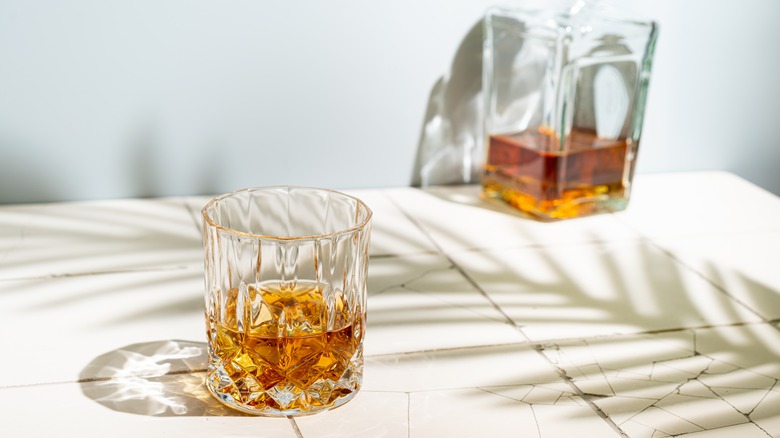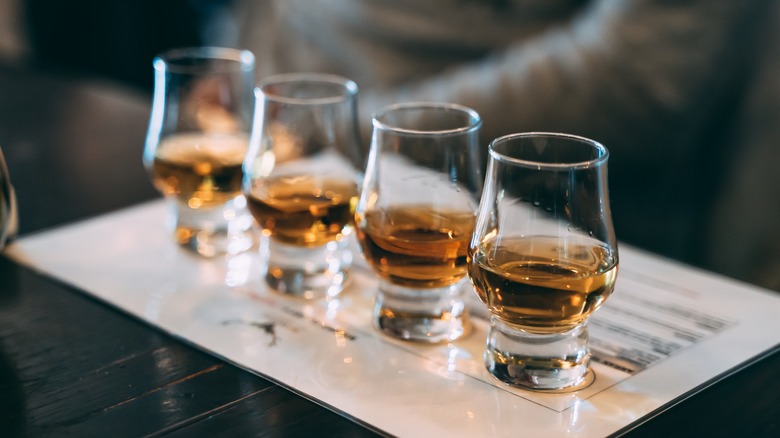What Makes Indian Whisky Unique
Although spirits come in a dizzying array of flavors, techniques, and regional renditions, most distilled liquids can be categorized into six primary types. A pantry stocked with gin, rum, whiskey, vodka, tequila, and brandy will cover the prevalent varieties. But there are, of course, exceptions. From Dasylirion shrub-distilled sotol to rice-based renditions of baijiu, the ever-complex world of spirits is difficult to summarize. In addition to unique distillate bases, there are also blends of styles. Take Indian whisky — which takes a rum-like molasses base spirit and combines it with grain-based whisky.
This liquor is incredibly popular, with the most well-known brand selling hundreds of millions of bottles. In fact, by a per-capita metric, India leads the world in whisky consumption, with a nearly ten-fold magnitude over the U.S. So why does this spirit remain relatively unknown abroad and India not often associated with the style? It all comes down to the technicalities of nomenclature.
What is Indian whisky?
Whisky's Indian legacy traces back to the 18th century when British rule introduced the spirit to the aristocracy. In the subsequent decades, production started domestically in the cooler regions of northern India. However, a grain shortage spurred molasses-based distillation since sugar production was — and continues to be — one of India's predominant industries. Combined with a propensity to a sweet palate, distillers created a unique liquor style composed of 90% rum-like liquor blended with 10% grain-based whisky. Today, most Indian whisky is made using molasses spirit blended with either imported Scottish whisky or domestically distilled single-malt. A renewed interest in single-malt rekindled the production of purely grain-based spirits. Although not as prevalent, such a molasses-free variant is sold today.
Since the liquor style typically isn't purely grain-based, manufactured in Scotland, or aged for set periods of time in exclusively wooden barrels, it cannot be sold as whisky in the European Union. This caused hurdles in foreign trade. However, in recent years, the style has finally received the spotlight. A sans-molasses rendition was recently crowned the world's best in a global tasting.
What does Indian whisky taste like?
Since Indian whisky encompasses many methodologies, components, and regions of production, its possible flavors are expansive. When it comes to the molasses-based distillate, it may come as no surprise the resultant spirit is sweet. However, this actually isn't due to the molasses. Distilling results in a hefty neutral spirit of 96% alcohol by volume, which is then watered down and blended. To soften its boozy sharpness, sugary notes are introduced through the barrels. Unlike other whisky producers, Indian distillers employ rum and brandy barrels, invoking unique flavor combinations.
Exclusively grain-based Indian whisky exhibits uniquely sweet notes, too. Due to growing conditions, Indian malts have tropical notes of mango, pineapple, and banana. Meanwhile, the barley used is a variety that exhibits a spicier character. Combined with more intensive, shorter barrel resting conditions — due to a hotter and more humid climate — the resulting spirit frequently has bold, leathery, and aromatic undertones. As a result, Indian whisky can exhibit flavors ranging from vanilla, caramel, and honey to darker fruit, raisin, and bitter coffee flavors, as well as some spice and heat. From many distillers, the resultant spirit is complex and undeniably worth seeking out. Thankfully, its sale is allowed in the U.S., so you can experience the South Asian spirit for yourself.


